April 2013 announces the centenary of the Ghadar Party – one of the most riveting symbols of Indian defiance against colonial oppression. What makes the Ghadar movement an enduring symbol in the imagination of youth is the fact that it was waged in the western world in support of an eastern movement for self-hood and self-determination. Unfortunately the predominant “non-violent” narrative of the Indian freedom movement has, over the past decades, successfully sidelined the contributions of these alternate movements. As Prithwindra Mukherjee, veteran scholar of the pre-Gandhian phase of the Indian freedom struggle and author of the seminal “Les Racines Intellectuelles du Mouvement D’Indépendance de L’Inde (1893-1918)” argued, “Those who are recognized and rewarded had been supposedly by the side of Gandhiji, no matter whether they fought for the country or not. Others belonging to the pre-Gandhian phase (1893-1918) had known the message of ma phaleshu and sacrificed all they had – in certain cases, up to the last drop of their own blood – for the cause of the Motherland.” 1 The dominant perception “sustained by catching slogans” has been, as nationalist historian R.C.Majumdar noted in his seminal History of the Freedom Movement in India, that “Gandhi achieved India’s freedom by the method of Satyagraha and thus laid down for the subject peoples all over the world a unique method for gaining independence without bloodshed.” But, as Majumdar argued, “a successful Satyagraha, as conceived by Gandhi, would necessarily mean that the British had given up their hold on India in a mood of repentance or penitence for their past sinful acts in India. But of this we have no evidence whatsoever.” 2
The travesty is that the groups which challenged the non-violent narrative either remain marginalised or face appropriation by Marxist intellectuals and scholars who have, while renewing to a certain extent an interest in them, been trying to establish a Marxist, anarchist credentials for these early Indian revolutionaries. Even Indian separatists have now pitched in with a programme of appropriation. Thus between the marginalisation and appropriation some actual facts and perceptions of these early Indian political thinkers and activists remain unexplained.
Discussing the Ghadar revolution a senior journalist in a leading Indian daily has taken pains to point out the Communists-Marxist inspiration of the entire movement. 3 To make such a conclusion is to look at things superficially and selectively and to negate altogether the nationalist spirit inspired by Indian nationalism that this early movement represented. A corrective is therefore called for.
Both stalwarts of the Indian revolution abroad, Shyamji Krishnavarma and Madame Bhikaji Cama were inspired by the Jugantar and Anushilan Samiti movements, by no means Marxist, back home in India. Both these groups espoused the cause of India’s liberation through violent methods if need be and equally emphasised the laying down of a solid intellectual foundation to the whole movement. The intellectual foundation that these groups wished to re-establish essentially derived inspiration from India’s civilisational ethos, vision and spirit. A careful reading of the lead editorials of two of the leading mouthpieces of the early nationalist movement “Bande Mataram” and the intensely revolutionary “Jugantar” that had, in its heyday, achieved a circulation of 50,000 in face of massive colonial clampdown, will amply make clear that intention. It has also been well established through personal memoirs and government records that the early nationalist movement in Bengal and in India was deeply inspired by the stirring speeches of Swami Vivekananda, especially his collection of talks from ‘Colombo to Almora’.4 The inspiration could also be seen in faraway America where in a pamphlet “A Few Facts about British Rule in India” issued in June 1915 by “The Hindustan Gadar Office” in San Francisco, reference was made to a passage from Swami Abhedananda’s proscribed book “India and Her People” (1906) where the monk cited figures showing how Indians were compelled to support the entire colonial administrative and military machinery.5
The Ghadar group, unlike the usual Marxists and anarchist conglomerations, acknowledged Swami Vivekananda’s contribution to the cause of Hinduism in the West. In fact, Lala Hardayal (1884-1939), the leading ideologue and organisers of the Ghadar movement, insisted on calling India “Bharatvarsha” and was fond of asserting “Satyameva vijayate nânrtam” while appealing to his countrymen to keep striving for freedom.6 Hardayal began his famous article “India in America” with “Very few readers of this Magazine can have a correct idea of the noble work which is being silently accomplished by the sons of Bharatvarsha”7 in America. In the same piece Hardayal also gave his assessment of Swami Vivekananda’s impact in the West:
When Swami Vivekananda stood on the platform of the Chicago Parliament of Religions in 1893 and evoked an outburst of applause by addressing his audience as “Sisters and Brothers of America,” he little dreamed that his work would be carried on after him by a devoted band of missionaries. The beneficial effects of his preaching are visible on every side. America is always alert for a lesson in religion from a Hindu…There is a keen and growing interest in Hindu thought. Many earnest enquirer wish to quench their thirst for the ideal at the fountain of Hindu philosophy….The work of the swamis [of the Vedanta Mission] has resulted in general diffusion of Hindu…A friend of mine has lectured on Indian politics and religion in the remote and inaccessible tracts of Arizona and Southern Mexico and he was heard with the greatest interest and even respect everywhere.8
Praising the contributions of the Vedanta movement in the West Hardayal clarified that though he was not a Vedantin he nevertheless admired persons from all creeds who worked for ‘introducing the discipline of idealism into human life.” Hardayal, according to his own confessions, was interested in the success of the Vedantic missionaries “as representatives of that spirit of enterprise and self denial which [was] transforming New India. Their work [was] part of the great renaissance which is breathing new life into Hindu society.”9 Terming a series of prominent Indians such as “Dayananda Saraswati, Mahendralal Sircar, Bankim, Arabinda Ghose, Tilak, J.C.Bose, Vivekananda” as “heroes of New India”, he called for appreciating all efforts made to uplift and project the Indian cause, including efforts made by “self-sacrificing swamis who are “making Hinduism aggressive,” because they cherish that dream and are sincerely devoted to it.”10 This is hardly a Marxist assessment of the contributions of Hindu religion in support of the Indian revolution!
Leading members of the early Indian revolutionary groups, developing an all India network went on to form the Nationalist group within the then Indian National Congress and put up the first major challenge to the policies of petition and prayer till then followed by the moderate lobby in the party. Lokmanya Tilak, Sri Aurobindo (then Aurobindo Ghose), Lala Lajpat Rai, Sardar Ajit Singh were leading members of the Nationalist party. Within a year of the famous nationalist daily “Bande Mataram” ceasing publication in 1908 in Kolkata, Madame Cama launched another version of the “Bande Mataram” from Paris under the same name. When repression against the revolutionary movement was unleashed in India, Cama announced that the “centre of gravity of political work had shifted from Calcutta, Poona, Lahore to Paris, Geneva, Berlin, London and New York.”11 She thus saw the work abroad as a continuation of the nationalist work back home. None of these leading revolutionaries displayed any Marxist tendencies during their lifetime and were instead positively inspired by the traditions and foundations of Indian civilisations.
There were a number of connecting links with the Indian nationalist at home and the Indian revolutionaries abroad. In 1906 Hem Chandra Das a member of the Jugantar core group in Bengal had already been sent to Paris in order to learn the art of bomb making. Das was later joined by others turning Paris, for a while into the centre of Indian revolution abroad. Madame Cama’s first design of the Indian flag had the words “Bande Mataram” etched on it. In June 1907, the Sociologist edited by Krishnavarma announced the setting up of the Desh Bhakt Samaj (Society of Patriots). The organisation was to have a central committee comprising of Krishnavarma and a few nationalist leaders from India. A sum of Rs.1500 was sanctioned for Indian revolutionary propaganda abroad and the leading Indian nationalist Bipin Chandra Pal ‘was selected as the first lecturer of this Samaj in U.K. for the year 1907.’ Pal’s incarceration in the Bande Mataram sedition case postponed his departure by a year.12 Thus while it has been argued that the Indian revolutionary groups abroad were mainly Marxists and were goaded by Marx’s writings to plunge into revolutionary activities it can be easily argued on the other hand that these revolutionaries had deep links with Indian nationalists and through their writings, far from propagating borderless, identity-less and denationalised world-views, spoke for Indian nationalism, Indian identity and civilisation.
By 1910 and 1911 revolutionaries associated with the Jugantar group had fanned out internationally and had begun organising Indian diasporic groups. Bholanath Chatterjee of the Jugantar group, for example, visited Malay around 1910-1911 and Thailand in 1913 and “imbued the Indian settlers [there] with revolutionary ideas.”13 There were many others too who were associated with the early nationalist movement in Bengal and went on to forge international linkages for furthering the Indian revolutionary movement abroad. Members of Jatindranath Mukherjee’s group, one of the leading revolutionary nationalist active in Bengal, had succeeded in developing an international network with the objective of overthrowing colonial rule in India. Deeply pious and religious Jatindranath, who had come early in contact with Swami Vivekananda and had been inspired to take to the revolutionary life by the monk,14 was deeply involved in laying the foundations of a revolutionary network all over the province. Jatin and his associates, except for a while M.N.Roy who had his brushes with Marxism, can hardly be called Marxists or anarchists.
Coming back to the Ghadarites and to another veteran revolutionary Dr. Tarak Nath Das (1884-1958), whom the article in question mentions, it may be relevant to argue that to assign neat labels of Marxist and anarchist to these figures is in fact unfairly trying to fit them into a strait jacket that they themselves may have rejected or abjured during their lifetime. A few examples from their thoughts and action would suffice to support our contention in the present discussion.
Through his early writings Hardayal emerges as the quintessential Indian nationalist imbued and immersed in the traditions of his land. In his “Our Educational Problem” (1922) in which Hardayal discusses the issue of national education in India and attacks the colonial education system and its aims as one which “de-Hinduizes us and causes the decay of our national institutions thereby hindering the growth of the feeling of Hindu unity and national life”,15 one sees him discussing at some length the benefits of Sanskrit for national integration. A few brief examples may be relevant. Hardayal made a demand which would make Indian Marxists see red. Recognising the need to develop Indian vernacular languages he called for making Sanskrit the link language for India. Castigating himself for being incapable of communicating with his fellow countrymen in this ancient cultural language of his land he wrote:
If I had followed nature, if our whole life had not been rendered ridiculous, artificial and miserable by this [colonial] education system, I should have written in Sanskrit to appeal to my countrymen in Bengal, Bombay or Madras, ( an aspiration which has not altogether been abandoned) and in Hindi to address the people of my province.16
Hardayal also argued for the need to rework and preserve India’s national institutions – her “history, religion, languages, social life, literature – all living forces in a community which mould national character and aspirations.” He saw these being destroyed by the education imparted to Indian youth. For Hardayal the “desire to attain Swaraj” was meant for the “defence of these beloved institutions, the heirlooms which we have inherited from our ancestors.”17 He also talked of two national virtues – virtues which usually never find mention in the Marxist lexicon – that were missing in the imposed colonial education system, “Patriotism and spirituality – the two great character-making forces – are absent from this educational system”, he noted.18
In the chapter “Sanskrit versus English” Hardayal argued that if English was declared the “language of unified India” then a united India would in effect mean a “denationalised India.” He called upon the Indian states, “the great semi-independent states” to act as “bulwarks of the national civilisation against the attacks of alien ideals.”19 The “illusion of Anglicisation” as he called it, from which India had been suffering for last few decades had to be destroyed and until that was done the “Brahma of National Self-Realisation “ would be hidden from Indians.20 All of them terms and expressions, that were and remain quite alien to the anarchists-Marxists. Interestingly, contrary to Marxist positions, while discussing the need to seek national unity Hardayal emphasised that the “principle of Unity exists WITHIN [sic] a community and cannot be imported from WITHOUT.21
One sees another dimension of Hardayal’s nationalism in his discussions of the threats faced by India’s civilisational fabric from activities of missionaries in India. Nationalist thinker and ideologue, Ananda Coomaraswamy, in his essays on national idealism while discussing in great detail the intellectual and cultural effects that Christian missionaries were making in India cited Hardayal’s position in support of his contentions. In his assessment of the missionaries meddling with Indian culture, tradition and life Hardayal appears as a staunch nationalist; the following review could hardly be expected from a Marxist:
The missionary is the representative of a society, a polity, a social system, a religion and a code of morality, which are totally different from our own. He comes as a belligerent and attacks our time-honoured customs and institutions, our sacred literature and traditions, our historical memories and associations. He wishes to give us a new name, a new place of worship, a new set of social laws. He has declared war to the knife against everything Hindu. He hates all that we hold dear. Our religion is to him a foolish superstition; our customs are the relic of barbarism; our forefathers are to him black heathens condemned to burn in the fires of hell for ever. He wishes to destroy our society, history, and civilisation… He looks forward to the time when the Smritis shall be unknown to the descendents of present day Hindus, and the Ram-Lila shall have become a meaningless word in their ears …22
Hardayal was intensely and primarily concerned with the fact that England was trying to destroy the “character” of his people. This civilisational onslaught was what seemed to have disturbed him most. As he told the journalist John Barry, “England is not allowing us to develop according to our own nature. She is imposing her own civilisation from without.”23 From a survey of his above discussed writings and utterances Hardayal emerges as a committed Indian nationalist, a speaker for Indian nationalism and an articulate voice of India’s tradition and culture who sought to ceaselessly analyse and tackle threats to India’s civilisational and cultural unity.
The life and works of Tarak Nath Das in exile is a whole subject by itself but it would be useful to add to the discussion by briefly looking at some aspects of it. Closely associated with the early nationalist movement in Bengal, by 1905 Das was already involved in clandestinely spreading the message of the nationalist revolutionaries in other provinces of India and made a special impact in the south. In 1906 he went off to the U.S. and joined efforts at spreading the message of the Indian revolution. In his over five decades stay and struggle in the United States Tarak Nath Das emerged as a formidable rallying point not only for the Indian revolutionary movement in the West but also for the civil rights movement of Asians there. Through his struggle, advocacy and incarceration Tarak Nath proved to be one of the ablest advocates of India in the West. A veritable polymath he also emerged as a prolific Asian intellectual of the epoch having earned a masters in 1911 in politics and international relations from the University of Berkeley and a doctorate in “international law and cooperation” from the University of Georgetown.
Along with his intense work for mobilization of opinion in favour of the Indian nationalists in the West, Tarak Nath also became a visiting professor at a number of leading western universities lecturing on international affairs and Indian culture and religion. In course of resurrecting and sustaining the international network of Indian revolutionaries both Tarak Nath and Hardayal dealt with Marxists and anarchists but their roots lay in the Indian traditions and was something which they never seemed to have abandoned. Tarak Nath, whose root inspiration was Jatin Mukherjee and through him Vivekananda and Sri Aurobindo, remained in touch with the latter throughout his life and sought his direction and help in his spiritual practices.24
When he visited India in 1952 after having toiled for 46 years in a distant land to spread the message of Indian nationalism, Tarak Nath’s public meeting in Calcutta, in which he called for the need to develop a collective discipline in our national life imbued by the revolutionary nationalist spirit, was disrupted by Communist student groups who called him an American agent.25 Surely, if he had been a committed Marxists, then these young disruptive left voices of India had failed to recognise him!
These well documented positions of the Ghadar revolutionaries and others thus, make it difficult to issue a conclusive verdict that their actions and visions were particularly and completely inspired by the Marxist and anarchist ideologies. It would be better, for the sake of balanced history writing and for the sake of preserving the deeds and words of these revolutionaries, to desist from trying to fit them into a left jacket. It would serve their memory best to call them Nationalists and not Marxists.
The centenary celebrations of the Ghadar movement thus, may do well to project that as truth.
Endnotes
- “Protecting India’s History from a Distant Land”, Prithwindra Mukherjee’s interview given to “The Undercurrent.ca” accessed at: http://www.theundercurrent.ca/canada2A.htm (29.9.2010)
- R.C.Majumdar, History of the Freedom Movement in India, vol.3, (Kolkata: Firma KLM, rpt, 1997), pp. xx-xxii. Majumdar points out how his proposal for writing a History of the Freedom Movement in India unanimously passed by the Indian Historical Records Commission was turned down by the Education Ministry of the Government of India in 1948. His letters remained unacknowledged and it was only on the intervention of the then President Dr. Rajendra Prasad in 1949 that the Ministry appointed a commission to look into the proposal. The commission’s recommendations were not acted upon and finally in 1952 a Board of Editors was formed with members, “one half of whom were historians” while the other half “were politicians of the Congress school” and with “two staunch Congressmen.” as Chairman and Secretary. Majumdar soon realised that his efforts at creating a balanced narrative of the freedom movement in India would be defeated. (R.C.Majumdar, The Sepoy Mutiny and the Revolt of 1857, (Calcutta: Firma KLM, 1957), pp.v-vi.).
- See e.g., Seema Chisti, “From US, the effort to free India from British”, in The Indian Express, April 22, 2013.
- See e.g. Sedition Committee Report – 1918 (Calcutta: Superintendent Government Printing, 1918), Collected Works of Nolini Kanta Gupta, vol.2, (Calcutta: Nolini Kanta Gupta Birth Centenary Celebrations Committee, 3rd ed., 1989), C.A.Tegart, “A Note on the Ramakrishna Mission” (1914) in Amiya K. Samanta ed., Terrorism in Bengal vol.4 (Kolkata: Govt. of West Bengal, 1995), Nirodbaran, Talks with Sri Aurobindo, vol.1, (Pondicherry: Sri Aurobindo Ashram, 2001), Bhupendranath Dutta, Swami Vivekananda: Patriot-Prophet, (Kolkata: Nababharat Publishers, 1954), Romain Rolland Prophets of the New India, (London: Cassell & Co., 1930), Haridas Mukherjee, “Swami Abhedananda: an Outstanding Personality” in Prabuddha Bharata, vol.115, no.6, (Kolkata: Advaita Ashrama, June, 2010,), S.C.Sengupta, Swami Vivekananda and Indian Nationalism (1984), (Kolkata: The Ramakrishna Mission Institute of Culture, rpt, 2001).
- See e.g. A Few Facts about British Rule in India, Bulletin No.1, (San Francisco: The Hindustan Gadar Office, 1915).
- Vide. Hardayal’s foreword to John D. Barry’s, Sidelights on India, (San Francisco, 1912), p.3.
- Har Dayal “India in America” in The Modern Review, vol.10, no.1, July 1911.p.1.
- Ibid., p.6
- Ibid., p.9
- Ibid., p.10.
- A.C.Bose, Indian Revolutionaries Abroad: 1905-1922, (Patna: Bharati Bhawan, 1971), p.28.
- Ibid., p.19.
- R.C.Majumdar, History of the Freedom Movement in India, vol.2, p.364.
- Prithwindra Mukherjee, Sadhak Biplabi Jatindranath (Kolkata: West Bengal Book Board, 1990), p.32.
- Har Dayal, Our Educational Problem, (Madras: Tagore & Co., 1922), p.65.
- Ibid., pp.67-68.
- Ibid., p.64.
- Ibid., p.75.
- Ibid., p.85.
- Ibid., p.87.
- Ibid.
- Vide Ananda Coomaraswamy, Essays in National Idealism, (Madras: G.A. Natesan & Co, 1909), p.156.
- John D. Barry, Sidelights on India, op.cit., p.4.
- For a detailed discussion on Tarak Nath Das see e.g. “Mahabiplabi Tarak Nath Das” in Prithwindra Mukherjee, Sadhak Biplabi Jatindranath, op.cit., pp.443-469.
- Ibid., p.446.
Published Date: 24th April 2013

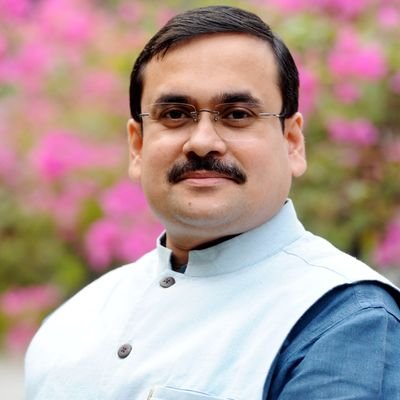
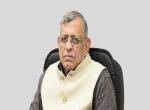
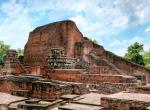

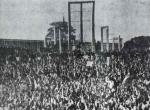
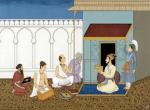

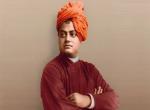
Post new comment